This 15,000 acre estate was purchased by Mitchell Henry as a gift to his wife Margaret when the couple fell in love with the Connemara area during their honeymoon in 1850. Kylemore Castle was constructed from 1867-1871 and featured many modern and innovative amenities. The castle overlooks a lake and has the dramatic backdrop of wooded mountainside.
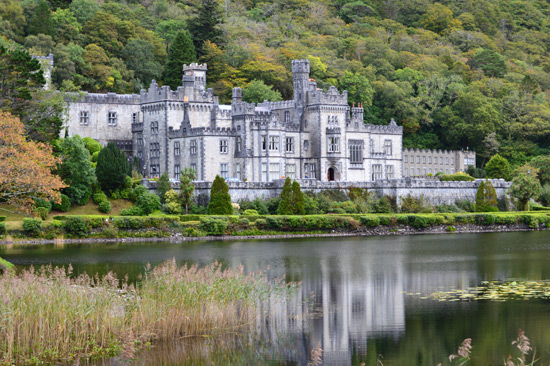
Kylemore Abbey was truly fairytale-like in appearance. The Other Half and I took a short tour of a handful of rooms in the castle open to the public, then spent the rest of the morning strolling the grounds. The castle is still being used as an abbey by the Benedictine Nuns who acquired the estate in 1920. And yes, that is a palm tree in the next photo. Cue the Zone Envy.
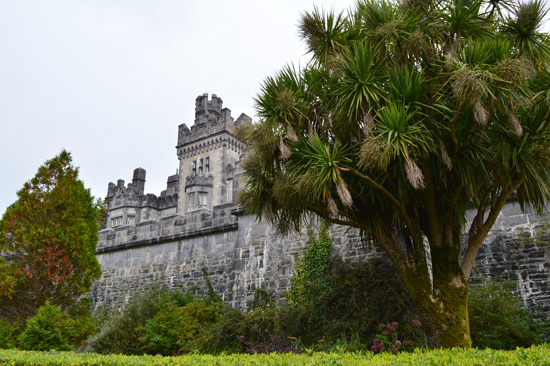
Strolling the Kylmore Estate
We walked along a wooded path to the mini cathedral Mitchell constructed in memory of Margaret when she passed away. When the Henry’s moved in, Mitchell began planting many of the trees both native and ornamental along this path. “An Choill Mhór” means “Big Woodland” in Gaelic. The plantings included Monterey Pine, Irish Yew, Lawson’s Cypress, Sitka Spruce, Rowan, Holly, Sycamore, Silver Birch, Wych Elm, Ash, Scots Pine, Sessile Oak, Common Larch, Alder, Hazel, Horse Chestnut, Beech, and even Western Red Cedar.
The Other Half and I grabbed a quick pastry and hot drink at the tea house outside the Victorian Walled Garden. There was a handful of children’s furniture designed by second year Furniture Design and Manufacturing students of GMIT Letterfrack around the tea house. All pieces were made from naturally fallen wood on the estate. I really liked this mini band shell made from willow branches.
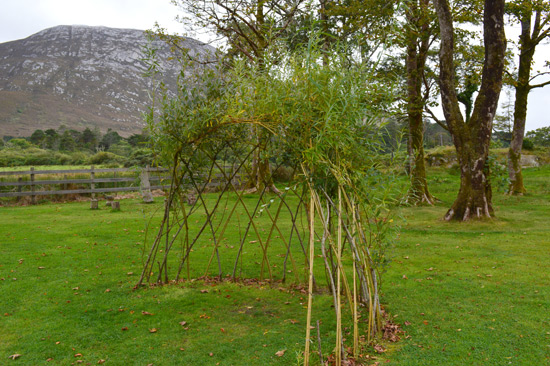
Kylemore Victorian Walled Garden
What a beautiful site when we entered the Victorian Walled Garden. Plants in this garden are not only grown on a reclaimed bog, but were introduced to Ireland before 1901. The 6 acre garden is built on a South slope of the estate at the foot of Dúchruach mountain. The selected location on the estate provided the best sun, good drainage, and a mountain stream water source. Here is the Eastern half of the garden, containing the decorative flower gardens, glass houses, and Head Gardener’s residence.
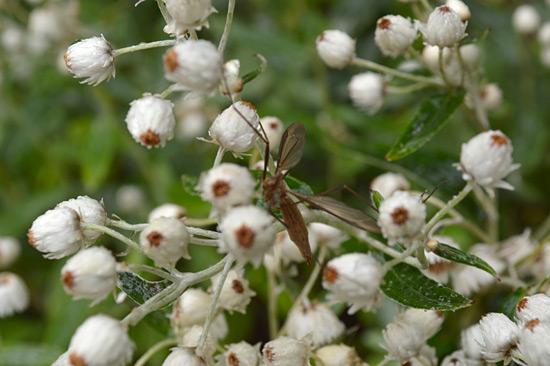 The brick walls are lined with various espaliered fruit trees.
The brick walls are lined with various espaliered fruit trees.
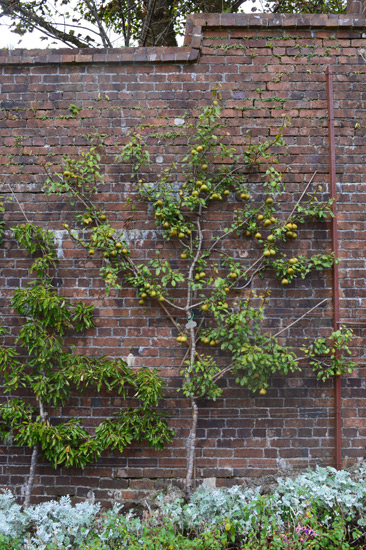 Here is a closer shot of the formal, pleasure garden. I was delighted to see a Araucaria araucana (monkey puzzle tree) here. I had just met one for the first time during my visit to Portland, Oregon this past Spring.
Here is a closer shot of the formal, pleasure garden. I was delighted to see a Araucaria araucana (monkey puzzle tree) here. I had just met one for the first time during my visit to Portland, Oregon this past Spring.
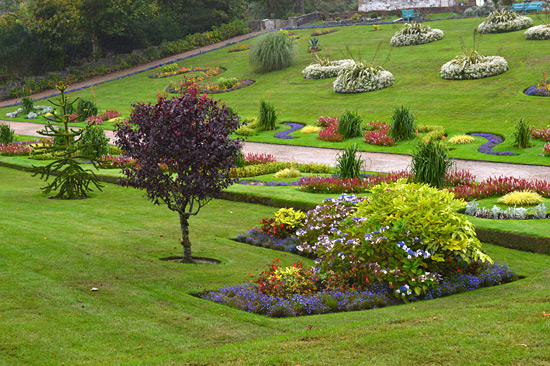 The other half of the garden is dedicated solely to growing food. If you look closely in the photo below, you will notice the hedges lining the main garden avenue running east/west through the garden.
The other half of the garden is dedicated solely to growing food. If you look closely in the photo below, you will notice the hedges lining the main garden avenue running east/west through the garden.
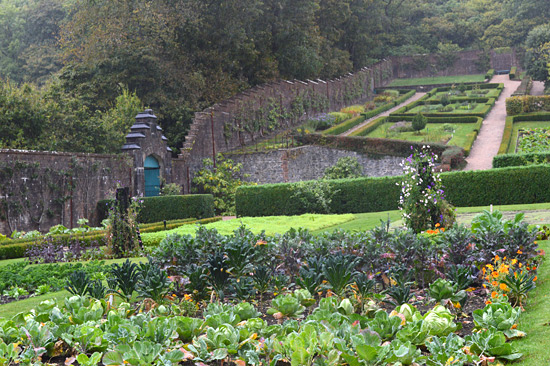 Between the hedges on the north and south sides of the path is a decorative, herbaceous border. This was designed to be a natural wall so visitors could stroll through the garden without having to see the garden staff working.
Between the hedges on the north and south sides of the path is a decorative, herbaceous border. This was designed to be a natural wall so visitors could stroll through the garden without having to see the garden staff working.
 The garden was quite modern for its time. It included 21 glasshouses to grow exotic fruits like bananas and figs. Two of the glasshouses have been restored, but all that is left of the majority are the foundations. However, this allowed us a peek at the pipe systems installed to heat the glasshouses via three boilers and hot water.
The garden was quite modern for its time. It included 21 glasshouses to grow exotic fruits like bananas and figs. Two of the glasshouses have been restored, but all that is left of the majority are the foundations. However, this allowed us a peek at the pipe systems installed to heat the glasshouses via three boilers and hot water.
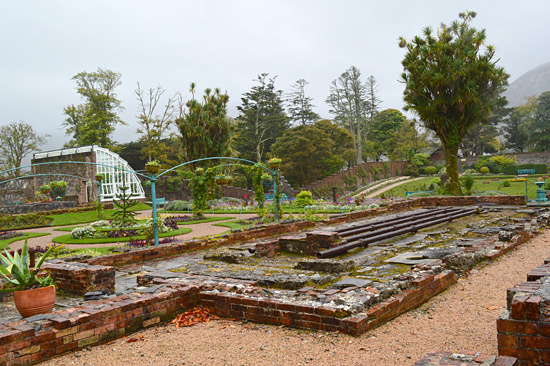 These were nice cold frames built off the side of one of the glasshouses. They are still being used by the present day gardeners. All the food from the garden is served on the grounds at the tea house and Mitchell’s Café.
These were nice cold frames built off the side of one of the glasshouses. They are still being used by the present day gardeners. All the food from the garden is served on the grounds at the tea house and Mitchell’s Café.
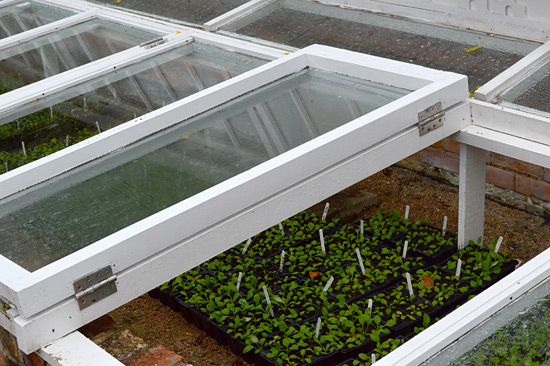
Frondness for Ferns
Something interesting I learned while visiting Kylemore that I will not soon forget is the Victorians’ obsession with collecting ferns. Out the West gate of the walled garden was a wooded walk containing an extensive fern planting. When I researched this further, I discovered “Pteridomania” meaning “Fern Madness.” Yes, there was a fern craze among the Victorians that warranted its own coined term!
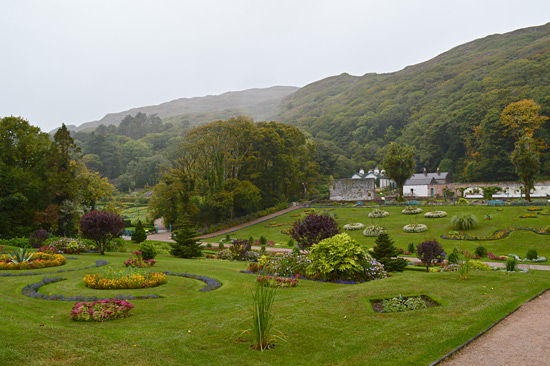
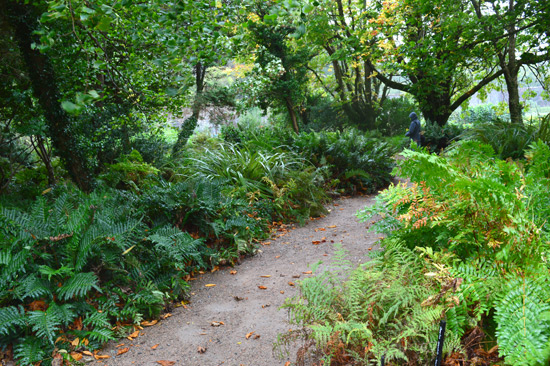
Another wonderful–interesting, informative, and beautiful–chapter, Stefanie.
Just a thought: You always refer to Josh as “the Other Half.” I liked it, at first–thought it amusing. But I’d love to see one chapter devoted to “Josh Leckrone: the Other Half” and how he supports you in your passion. It could even be “interesting, informative, and beautiful.”
Love you.
Jan
Thank you for the comment, Jan. I often refer to him as the Other Half more out of respect for his privacy than any disregard for his role in my gardening adventures. He is definitely very supportive! I will give your suggestion some thought.